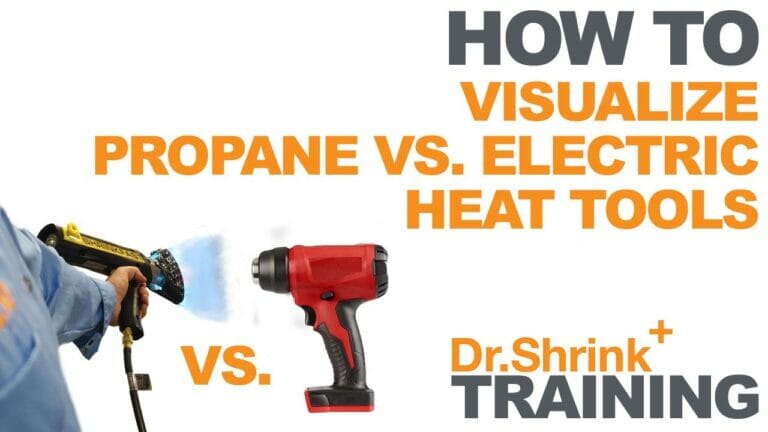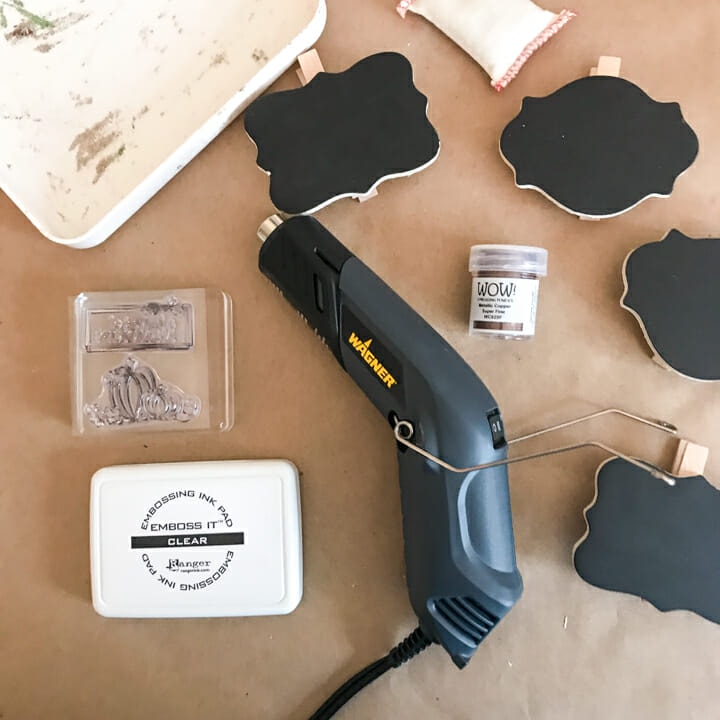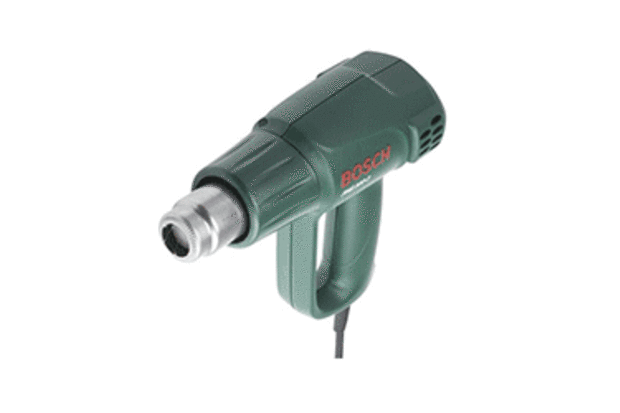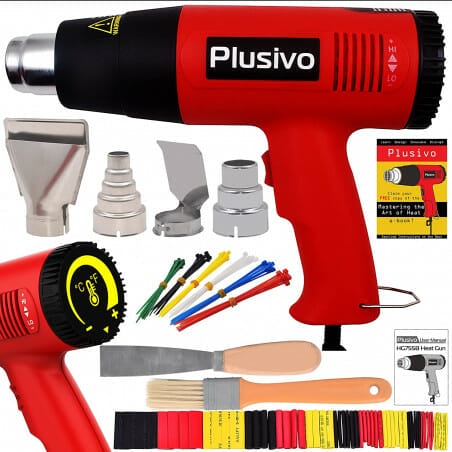
Welcome to the world of heat guns! If you’ve ever wondered about “Heating It Up: Mastering the Art of Heat Guns,” you’ve come to the right place.
Picture this: you’re working on a DIY project, needing to remove paint or shape plastic, and you encounter a stubborn obstacle. That’s where a heat gun comes in, like a superhero with the power to conquer tough tasks.
In this guide, we’ll explore the ins and outs of heat guns, from their basic functions to advanced techniques. So, put on your safety goggles and get ready to dive into the exciting world of heat guns!
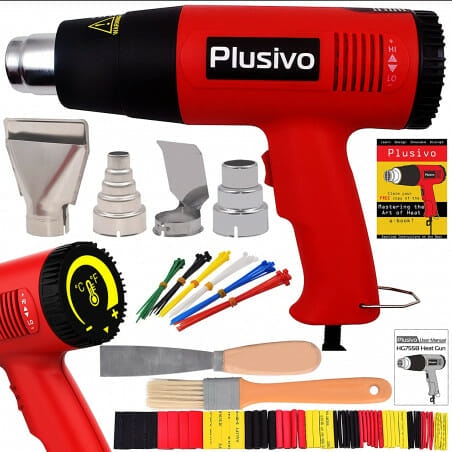
The Art of Heat Guns
Ready to take your DIY projects to the next level? Learn how to master the art of heat guns with these expert tips. From paint removal to plastic shaping, heat guns are versatile tools that can handle a variety of tasks.
Discover the proper techniques, safety precautions, and creative uses for heat guns in this step-by-step guide. Whether you’re a seasoned pro or just starting out, heating it up with heat guns has never been easier!
Basics of Heat Guns
Before we delve into the diverse applications of heat guns, it is essential to understand the basics of how these remarkable tools work. Heat guns are handheld devices that generate hot air through the use of an electric heating element and a powerful fan.
When you turn on a heat gun, the heating element rapidly warms up, producing a stream of hot air that can reach temperatures ranging from 100 to 1000 degrees Fahrenheit.
This precisely controlled hot air is then directed onto the desired surface, providing a range of benefits and applications that we will explore in more detail.
Understanding Heat Gun Temperature Control
One of the key features of heat guns is their ability to regulate temperature. Most heat guns come with adjustable temperature settings, allowing you to choose the optimal heat level for your specific project.
The temperature control dial or buttons enable you to increase or decrease the heat output, ensuring that you have the right amount of heat for the task at hand.
This versatility is particularly useful when working with different materials, as each one may require a specific temperature range for optimal results.
From delicate heat-sensitive surfaces to stubborn adhesives and tough materials, heat guns offer precise control over temperature to achieve the desired outcome.
In addition to adjustable temperature settings, some heat guns also feature built-in temperature sensors that maintain a consistent heat output. These sensors help prevent overheating, which can be crucial when working on sensitive materials or for extended periods. By regulating the temperature and preventing excessive heat, heat guns provide a safe and efficient way to complete a variety of projects.
2. The Power of Airflow in Heat Guns
In tandem with temperature control, heat guns also offer adjustable airflow settings. The airflow is responsible for distributing the hot air, directing it precisely where you need it.
Heat guns typically have multiple fan speed settings, allowing you to choose a high or low airflow rate based on your requirements.
Higher airflow settings are ideal for tasks that require quick heat distribution, while lower settings offer more precise and concentrated heat application.
The airflow of a heat gun serves various purposes. It aids in cooling the heating element, preventing it from overheating. It also helps disperse fumes or vapors that may be produced during certain applications.
Furthermore, airflow can be utilized for tasks such as drying wet surfaces or even accelerating the drying time of paint or adhesives. By adjusting the airflow, you have greater control over how heat is distributed, ensuring that each project is completed efficiently and effectively.
Applications of Heat Guns
Now that we understand the fundamentals of heat guns, let’s explore some of the most common and practical applications where these versatile tools truly shine.
From home improvement to crafting and even automotive repairs, heat guns have a wide range of uses that can make your projects easier, faster, and more precise.
Paint and Varnish Removal
One of the primary applications of heat guns is the removal of paint and varnish from various surfaces. Whether you’re restoring an old piece of furniture or preparing a wall for a fresh coat of paint, a heat gun can be your best friend.
Apply heat to the painted surface, and as the paint softens, you can easily scrape it away with a putty knife or a paint scraper.
The controlled heat from a heat gun can significantly speed up the process of paint removal, making it much more efficient compared to traditional methods such as sanding or using chemical strippers.
Additionally, heat guns can be a valuable tool when it comes to removing varnish from wood surfaces. By heating the varnish, it becomes pliable and easier to scrape away, revealing the natural beauty of the wood underneath.
Whether you’re refinishing a table or restoring a hardwood floor, a heat gun can simplify the process and help achieve professional-looking results.
Benefits of Paint and Varnish Removal with Heat Guns:
1. Efficiency: Heat guns speed up the paint and varnish removal process, saving you time and effort.
2. Precision: The controlled heat and adjustable temperature settings allow for precise application and removal.
3. Versatility: Heat guns can be used on various surfaces, including wood, metal, and even heat-resistant plastics.
4. Environmentally friendly: Unlike chemical strippers, heat guns do not release harmful fumes or chemicals into the air.
Shaping Plastic and Thermoforming
Another fascinating application of heat guns is the ability to shape and mold plastic materials through a process called thermoforming. Thermoforming involves heating a sheet of plastic until it becomes soft and pliable, allowing you to bend it into the desired shape. Whether you’re creating custom enclosures, forming protective covers, or even building intricate cosplay props, a heat gun can be an invaluable tool.
With the precise temperature control of a heat gun, you can apply heat evenly to the selected area, softening the plastic. Once soft, you can then manipulate the plastic using molds, templates, or your hands to achieve the desired shape. As the plastic cools, it hardens, permanently retaining the new shape. This ability to shape plastic with heat guns opens up a multitude of creative possibilities and gives you the flexibility to bring your ideas to life.
Benefits of Shaping Plastic with Heat Guns:
1. Versatility: Heat guns can be used on different types of plastic, making them suitable for a wide range of projects.
2. Precision: The adjustable temperature control ensures that the plastic reaches the ideal softness for shaping without overheating or melting.
3. Cost-effective: Thermoforming with a heat gun eliminates the need for expensive machinery often used in industrial processes.
4. Customization: With a heat gun, you have the freedom to create bespoke shapes and designs according to your specific requirements.
3. Soldering and Desoldering
Heat guns are also invaluable tools for soldering and desoldering electronic components. Soldering involves melting a metal alloy called solder to join two or more electrical connections.
On the other hand, desoldering is the process of removing solder to repair or replace electronic components. While soldering irons are commonly used for these tasks, heat guns offer distinct advantages in certain situations.
When working with larger components or circuit boards that require higher temperatures, heat guns provide the necessary heat output.
The wide airflow of a heat gun can evenly distribute heat, allowing for efficient solder melting and desoldering. Heat guns also enable faster heating and cooling times compared to soldering irons, making them ideal for quick repairs and larger-scale projects.
Benefits of Soldering and Desoldering with Heat Guns:
1. Versatility: Heat guns can be used for both soldering and desoldering, eliminating the need for separate tools.
2. Efficiency: Heat guns offer faster heating and cooling times, allowing for quicker soldering and desoldering processes.
3. Larger-scale projects: Heat guns are well-suited for soldering or desoldering larger components or circuit boards.
4. Precise temperature control: Adjustable temperature settings provide optimal heat for various soldering and desoldering tasks.
Embossing and Heat-Setting
Embossing is a popular technique used in paper crafts, such as cardmaking and scrapbooking, to add texture and dimension to designs. Heat guns are essential tools for embossing, as they can melt embossing powders to create raised and shiny effects. The process involves stamping an image or design onto the paper using embossing ink, sprinkling embossing powder over the wet ink, and then applying heat with a heat gun. As the heat gun is directed onto the powder, it quickly melts and adheres to the paper, resulting in a raised, glossy, and durable finish.
Apart from embossing, heat guns are also useful for heat-setting various types of paints, inks, and dyes on fabric and other surfaces. Heat-setting is the process of applying heat to dried paint or ink to cure or fix it permanently. This helps prevent smudging or flaking and ensures that the design remains vibrant and long-lasting. Whether you’re customizing textiles or enhancing mixed-media artwork, heat guns offer a convenient and reliable method for heat-setting.
Benefits of Embossing and Heat-Setting with Heat Guns:
1. Speed and efficiency: Heat guns quickly melt embossing powders and heat-set various mediums, saving time and ensuring quick results.
2. Precision: Heat guns provide precise and controlled heat application, preventing over-melting or scorching of materials.
3. Creative possibilities: Heat guns open up a world of creative techniques, allowing for unique designs and finishes.
4. Versatility: Heat guns can be used on various surfaces, including paper, fabric, and even polymer clay.
Frequently Asked Questions
Are you curious about the art of using heat guns? Look no further! We’ve got the answers to your burning questions right here.
1. How does a heat gun work?
A heat gun works by producing a stream of hot air that can reach high temperatures. When you turn on a heat gun, it draws in cool air, which is then heated by an electric element inside the gun. This heated air is then blown out through a nozzle, allowing you to direct the heat to the desired area.
By adjusting the temperature and airflow settings on the heat gun, you can control the intensity of the heat. Whether you need to soften adhesives, shrink plastic, or strip paint, a heat gun provides the versatile heat source you need.
2. What safety precautions should I take when using a heat gun?
Safety should always be a top priority when using a heat gun. Here are some important precautions to follow:
Firstly, make sure to wear heat-resistant gloves to protect your hands from burns. Also, wear safety goggles to shield your eyes from any flying debris or sparks.
Keep a safe distance from flammable materials and make sure to use the heat gun in a well-ventilated area to avoid inhaling any fumes.
Always unplug the heat gun when not in use and never leave it unattended. Remember to let the heat gun cool down completely before storing it. By taking these safety measures, you can ensure a safe and enjoyable heat gun experience.
3. Can I use a heat gun to remove old paint?
Absolutely! One of the most common uses for a heat gun is for paint removal. The heat from the gun softens the paint, making it easier to scrape off.
Start by setting the heat gun to a medium temperature and directing the hot air towards the painted surface. As the paint begins to bubble, use a scraper or putty knife to gently remove it.
However, it’s crucial to be cautious when using a heat gun for paint removal. Always wear protective gear, work in a well-ventilated area, and keep the heat gun moving to prevent damage to the underlying surface.
Take breaks to allow the painted area to cool, and avoid applying too much heat in one spot to prevent scorching or burning the material.
4. Can a heat gun be used for crafting projects?
Definitely! Heat guns are incredibly versatile tools when it comes to crafting. Whether you want to emboss paper or add texture to fabric, a heat gun can help you achieve professional-looking results. The heat from the gun activates various art mediums like embossing powder, shrink plastic, and heat-activated adhesives.
When using a heat gun for crafting projects, it’s important to follow the specific instructions for the materials you’re working with.
Use low to medium heat settings and hold the heat gun a few inches away from the surface to avoid scorching or burning. With a little practice, you’ll be able to take your crafting projects to the next level with the help of a heat gun.
5. Are there any alternative uses for a heat gun?
Absolutely! While heat guns are commonly associated with DIY projects and crafting, they have many other practical uses. You can use a heat gun to thaw frozen pipes, remove labels and stickers, bend plastic pipes, or even sterilize surfaces.
However, always exercise caution and carefully read instructions or seek professional advice before using a heat gun for alternative applications.
Safety should always be the primary concern, and using a heat gun properly is essential to avoid accidents or damage to property. So get creative with your heat gun and explore the range of possibilities it offers!
So, let’s wrap things up! Heat guns are super helpful tools that can do lots of cool things. They can strip paint, shrink wrap, and even bend plastic. Just be safe and remember to wear protective gear. Use low heat for delicate materials and high heat for stubborn tasks. Practice and experiment to become a heat gun master!

